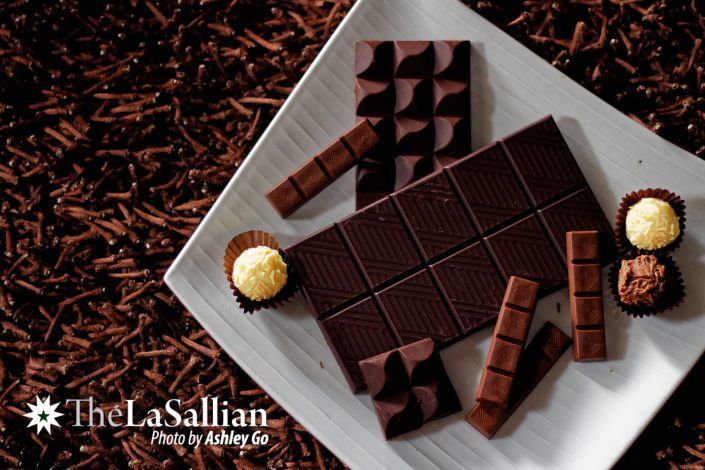There are very few things as universally loved as chocolate. Whether in the form of a bar, served as a truffle, or coated with a candy shell, chocolates seem to be the type of sweets that never go out of style. The chocolate industry is also currently on the rise, with the 2020 Worldwide Cocoa & Chocolate Market Report predicting a nearly seven percent compounded annual growth rate for the global chocolate market by 2023.
There’s no doubt about it: the world has a sweet tooth, and the Philippines is no exception. From uniquely Filipino dishes such as champorado and hot chocolate made from local tablea, to mass produced choko-choko sticks and Cloud 9 bars, it is clear that the Philippines has a fondness for all things chocolate. Snickers bars and Hershey’s Kisses may be a more common sight in Philippine groceries; but local brands such as Auro Chocolate, Theo & Philo, and even smaller chocolatiers like True Chocolate have recently become a more common sight.

A budding industry
With brands like Cadbury and Ferrero Rocher already having an established presence in the market, Kelly Go’s decision to create Auro Chocolate was initially met with skepticism. Many of her old friends and colleagues did not think that the brand, which offers specialty chocolates made with minimal processing, would resonate in the market. However, it’s undeniable today how Auro Chocolate has attained international acclaim, and this, Go largely credits to the “raw potential” of cacao farming in the country.
Go elaborates that this potential is often not evident to the farmers themselves, who tend to be held back by the practices they are accustomed to. “Oftentimes, the farmers have great cacao, they just don’t know it,” she explains, noting that this could further be maximized. The country has been in the cacao industry for centuries, but Go emphasizes that “the only difference [now] is we are going after better flavor, elevating our own products.”
Theo & Philo, another local chocolate brand, recognizes that producing high-quality cacao is a collaborative effort between companies and farmers. Maintaining a close relationship with farmers by paying attention to their needs and acknowledging their concerns is of great importance in producing high-quality chocolate. “We give them better-than-average prices and also support their farms by helping out in providing equipment and facilities to improve their production,” shares a representative from Theo & Philo.
The two companies also acknowledge that the industry should not only maximize the cacao potential of the country, but should also help the farmers have a sustainable livelihood. “We give security to the farmers. We’re here to stay, and [we will] continue to support them,” Go expresses.
The collaboration between the two parties was internationally recognized when farmer Jose Saguban, a partner of Auro Chocolate, was among the awardees for the Top 20 Best Cacao Beans in the World at the prestigious International Cocoa Awards ceremony held in France last October, 2019. This recognition, according to Go, is a testament toward the idea that “Filipino products can be world class—not just something that [is limited to] our country, but something that we [could] share with the world.”
Tsokolate with a twist
One of the things that distinguish most local bean-to-bar chocolate brands from their international counterparts is their distinctly Filipino flavor profile. Auro Chocolate’s Milk Chocolate with Banana Chips and Theo & Philo’s Dark Chocolate with Green Mango and Salt are just some examples of how these chocolatiers have integrated the Filipino palate into their products.
Theo & Philo’s process for coming up with flavors for new products can involve “[putting a] Filipino twist on a classic, like [dark chocolate with] calamansi instead of orange.” Furthermore, the way their products are presented emphasize this Filipino-centered ideology. Theo & Philo’s representative explains that the brand’s packaging intentionally depicts animals and plants native to the Philippines as a “nod to [local] culture and the rich natural ecology that the Philippines has.”

Meanwhile, Treena Tecson, the baker behind True Chocolate, explains that her flavors are inspired by the cacao beans themselves, “I use cacao beans from different regions in the Philippines. I am inspired by the flavor profiles unique to each batch of cacao beans, and my [goal] is to enhance these flavors in each [chocolate] bar that I make.”
These local chocolate brands also maintain the bean-to-bar method of making chocolate, leading to their carefully curated range of flavors and products. “Bean-to-bar means that [all Auro] chocolate is made from scratch, and our chocolate makers control every step [of] the process,” Go explains. This gives most local chocolates that employ the bean-to-bar method a distinctly home-grown feel. As opposed to the standard practice of factories churning out large quantities of chocolates, the bean-to-bar method produces chocolate in smaller batches, allowing their creators to give “more attention to quality and flavor and story and origin,” as Go puts it.
The bean-to-bar method also allows smaller businesses, like True Chocolate, to flourish alongside bigger brand names, giving aspiring chocolate makers a chance to help broaden the local market. “I don’t have big machines or equipment, just a small chocolate grinder that I use at home,” Tecson explains her chocolate-making process. “I still hand temper all the chocolates I make”—meaning she manually mixes the chocolate while it slowly heats then cools, as opposed to having a machine control the temperature and do the mixing.
Small adjustments, big rewards
Philippine chocolate is slowly making a name for itself in the global industry, but its sweet ascent is no coincidence. It was borne from the collective efforts of those trying to develop and perfect the art of Filipino chocolate-making.
The ongoing appreciation of local chocolate, Go believes, is from an “industry-wide effort” to elevate the standards of Philippine chocolate. She elaborates, “We [and other companies in the industry] might not necessarily work together or it’s not necessarily coordinated, but I think that we have similar missions and it’s all toward the same goal.”
Premium Philippine chocolate today centers on providing a sustainable wage to cacao farmers, caring about quality, and emphasizing Filipino flavors—in effect the giving consumers the opportunity to experience a familiar sweet treat in a unique and special way. This chocolate renaissance, which places sustainability and local ingenuity at the heart of its craftsmanship, proudly offers a piece of Philippine heritage to the world stage.
